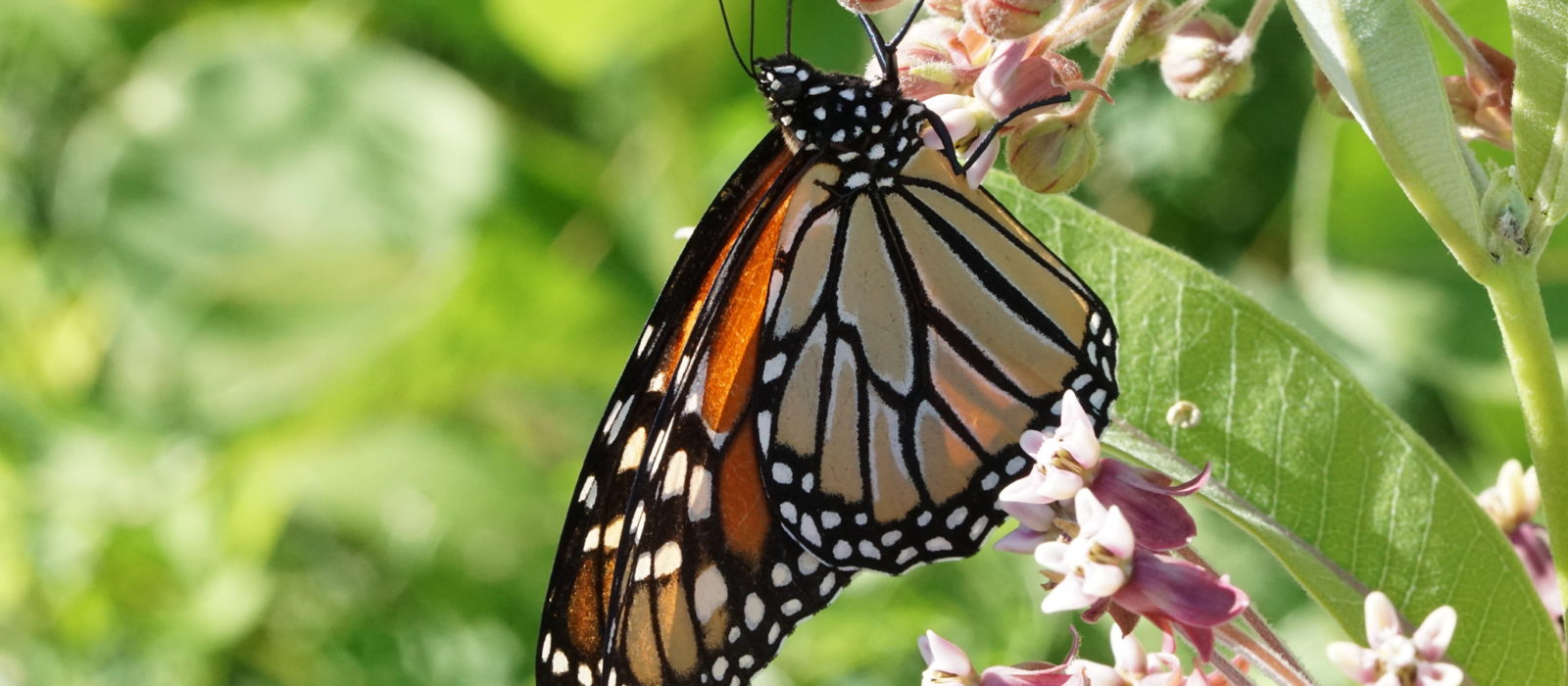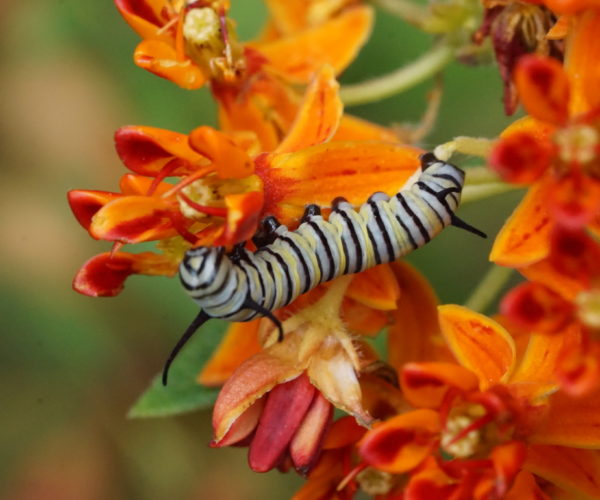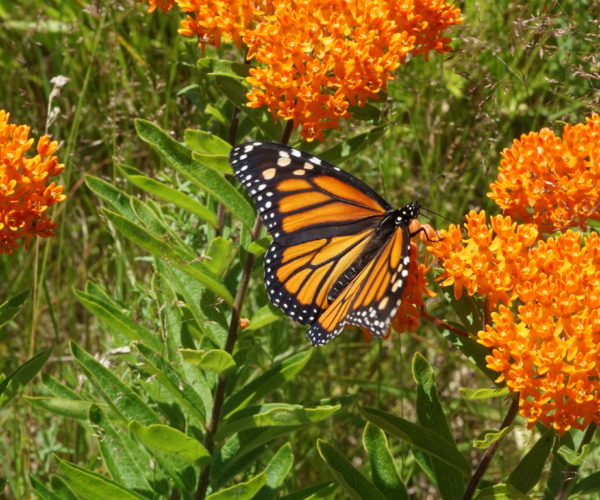Perhaps the best-known insect in the United States is the Monarch butterfly, Danaus plexippus. This stately orange butterfly is known for its prodigious annual migrations, concentration in traditional wintering grounds in Mexico, Florida, and California, and its close association with milkweeds (Asclepias spp.), which are the food plants generally used by Monarch caterpillars. It seems like everybody can recognize this butterfly, and everybody loves it, as well.
In recent years, a great deal of concern has been raised over the status of the Monarch. In particular, modern agricultural methods were implicated in dramatic regional declines of this butterfly. Genetically modified crop plants, designed to be resistant to herbicides, were treated with applications of pesticides designed to kill plants that might compete with the crops. The result was the elimination of wild plants, including milkweeds, from in and around crop fields. Monarchs lost a lot of their potential food across a wide swath of their geographic range.
As evidence mounted, much of it anecdotal, concern grew over the possibility of this iconic butterfly declining into rarity or even extinction. In response, biologists began studying Monarch populations more closely, and naturalists begin encouraging their local Monarch populations, planting milkweeds to support Monarch larvae and even capturing larvae to raise in captivity (safe from predation and parasitism, but not always from disease), to be released at maturity.
One recent article, “Opposing global change drivers counterbalance trends in breeding North American monarch butterflies,” draws on a vast swath of data garnered from July 4th Butterfly Counts coordinated by the North American Butterfly Association to suggest a much more complicated picture. Writing in the open-access journal Global Change Biology, a team of biologists led by Michael S. Crossley argues that “[w]hile the data revealed declines at some sites, particularly the US Northeast and parts of the Midwest, numbers in other areas, notably the US Southeast and Northwest, were unchanged or increasing, yielding a slightly positive overall trend across the species range. Negative impacts of agricultural glyphosate use appeared to be counterbalanced by positive effects of annual temperature, particularly in the US Midwest.” (Read the article here.)
Among entomologists, there has long been worry that public concern over Monarchs may have been diverting attention from more pressing ecological concerns. Crossley and his co-authors “caution against complacency since accelerating climate change may bring growing threats. In addition, increases of summer monarchs in some regions, especially in California and in the south, may reflect replacement of migratory with resident populations.” But in their view, “it is perhaps reassuring that ubiquitous downward trends in summer monarch abundance are not evident.”
Matt Pelikan is the director of the Martha’s Vineyard Atlas of Life project at BiodiversityWorks.


